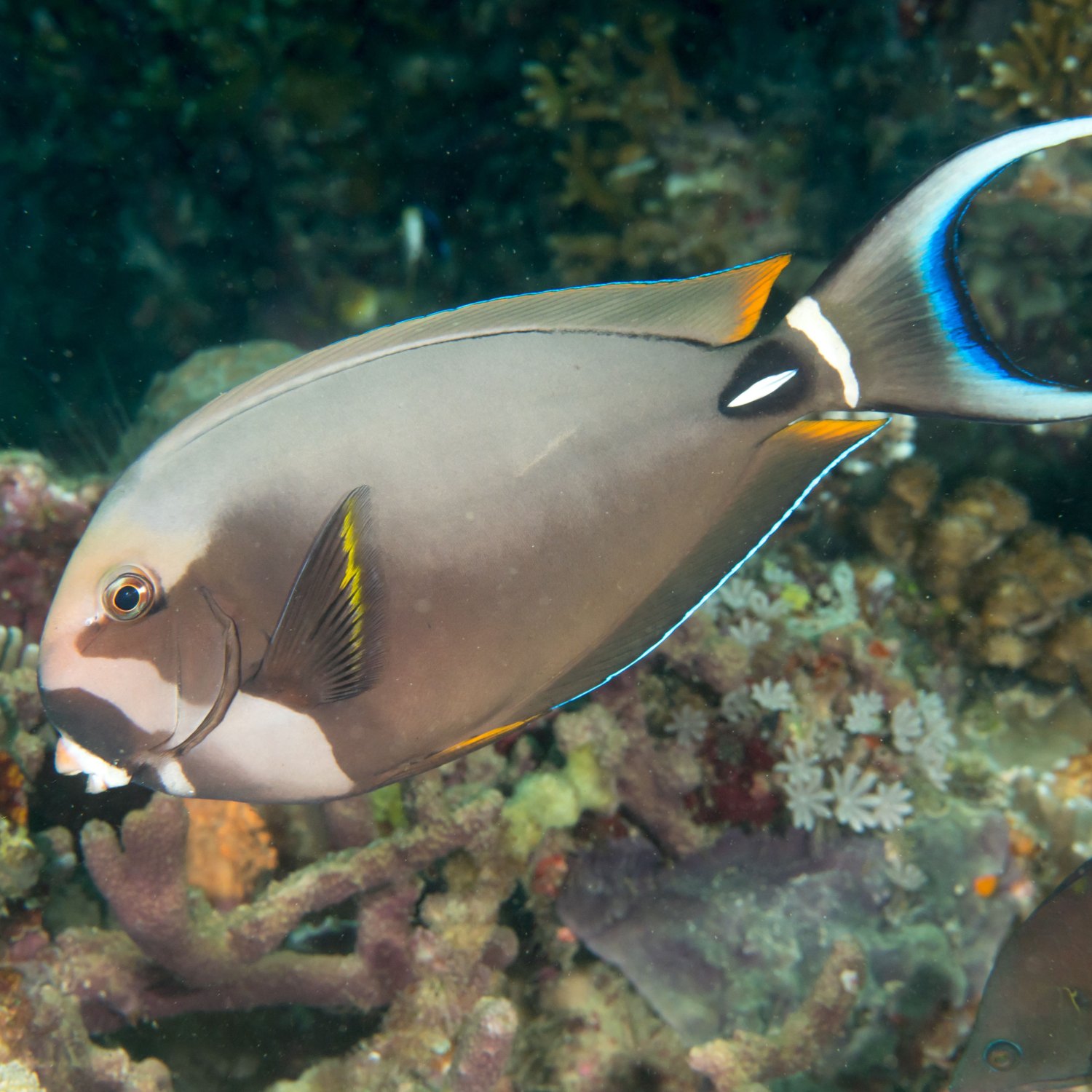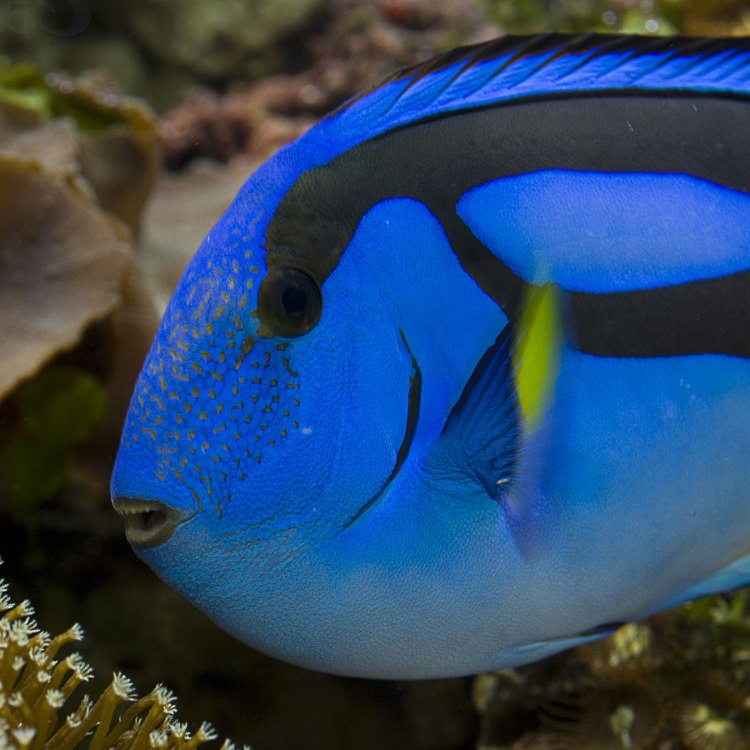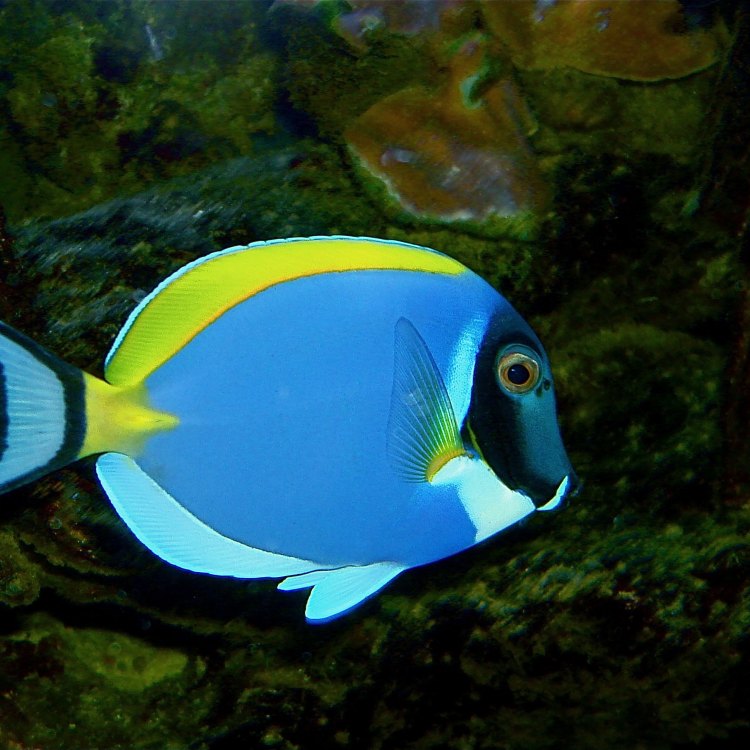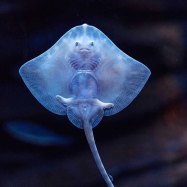
Surgeonfish
Average length of 20 to 40 centimeters (8 to 15 inches)
Surgeonfish, ranging from the colorful blue tang to the iconic yellow tang, are popular inhabitants of coral reefs worldwide. With an average length of 20 to 40 centimeters, these Acanthuridae family members have a laterally compressed body shape. Easily recognizable and found in vibrant hues, surgeonfish are truly a sight to behold in the underwater world.
Animal Details Summary:
Common Name: Surgeonfish
Kingdom: Animalia
Habitat: Coral reefs
The Colorful and Fascinating Surgeonfish: A Delightful Addition to Coral Reefs Worldwide
The ocean is home to a plethora of stunning creatures that have captured our imagination for centuries. From majestic whales to mesmerizing jellyfish, there is no shortage of wonders to discover in the vast depths of the sea. Among these enchanting creatures, the surgeonfish stands out for its vibrant colors and distinct features.Scientifically known as Acanthuridae, the surgeonfish is a diverse family of marine fish that belongs to the Actinopterygii class in the Animalia kingdom Surgeonfish. They are commonly called surgeonfish, named after the sharp "scalpel-like" spine located on their tails, resembling a surgeon's surgical tool. Found in tropical and subtropical oceans around the world, surgeonfish can be a delightful addition to coral reefs with their striking colors and unique characteristics.
Evolution and Physical Appearance
Surgeonfish can be traced back to the Eocene epoch, making them one of the oldest families of marine fish. They have evolved over millions of years and have developed various features that make them stand out from other species of fish. Most obvious is their bright and vibrant coloration, ranging from shades of blue, purple, yellow, and orange. These colors are not just aesthetically pleasing but also serve as a form of camouflage for protection against predators.Another notable feature of surgeonfish is their body shape. They are laterally compressed, meaning their bodies are flattened on their sides. This gives them a streamlined appearance, making it easier for them to navigate through coral reefs where they spend most of their lives Snailfish. Compared to other fish, surgeonfish have a longer caudal fin, which is used for propulsion and steering.
Habitat and Distribution
As the name suggests, surgeonfish are typically found in coral reefs worldwide. They thrive in warm, tropical waters and are often spotted in the Indian and Pacific Oceans. Coral reefs offer essential shelter and protection for surgeonfish, as well as an abundant source of food. They are herbivorous, feeding mainly on algae and other aquatic plants.Surgeonfish are also known for their territorial behavior and can be found in large numbers in a particular area of the reef. This makes them a vital component of the ecosystem as they play a crucial role in maintaining the balance of the reef's ecosystem.
Geographic Distribution
There is an incredible diversity within the surgeonfish family, with over 80 different species found worldwide. They can be found in various countries, including Australia, Indonesia, Maldives, and even as far as the Red Sea. Some of the most popular surgeonfish species include the Powder Blue Tang, the Yellow Tang, and the famous Blue Tang, more commonly known as "Dory" from the hit movie Finding Nemo.Each species of surgeonfish has its unique coloration, behavior, and preferred habitat, making them a fascinating subject for research and observation. For instance, the Lined Surgeonfish can be found in the Great Barrier Reef in Australia, while the Red Sea Sailfin Tang is found exclusively in the Red Sea.
Social Behavior
Although surgeonfish are usually solitary creatures, they can form schools when they are in their juvenile stage. These schools provide protection against predators and offer an excellent opportunity for the young surgeonfish to learn from more experienced members of the group. As they reach maturity, most species of surgeonfish become territorial and prefer to live alone or in small groups.Interestingly, surgeonfish are known to engage in a unique form of communication using their tail spines. They produce audible sounds by rubbing their spines against the rocks, which is believed to be a way of establishing dominance or attracting mates.
The Importance of Surgeonfish in Coral Reefs
Coral reefs are one of the most delicate and diverse ecosystems in the world, providing a home for millions of marine creatures. Surgeonfish play a vital role in maintaining the health and balance of these reefs. As herbivores, they keep the growth of algae in check, ensuring that it does not overtake the reef and cause harm to other species.Moreover, surgeonfish also contribute to the growth and regeneration of reefs. Their excrement is rich in nutrients, which serve as fertilizer for the coral, promoting growth and regeneration. In addition, as they swim through the reef, surgeonfish help distribute coral larvae, aiding in their dispersion and settlement.
Threats to Surgeonfish
Despite their crucial role in the marine ecosystem, surgeonfish are facing numerous threats that could potentially harm their population and the coral reefs they inhabit. The most significant threat to surgeonfish is overfishing. They are heavily targeted for their vibrant colors, making them highly sought-after for the aquarium trade. As a result, their population is declining in some areas, threatening the balance of the coral reef ecosystem.Another threat to surgeonfish is coral bleaching, a phenomenon caused by rising ocean temperatures, pollution, and other environmental factors. Coral bleaching can lead to the destruction of coral reefs, harming the habitat of surgeonfish and other marine creatures.
Conservation Efforts
In recent years, there has been a growing awareness of the vital role surgeonfish play in maintaining the health of coral reefs. As a result, various conservation efforts have been put in place to protect surgeonfish and their habitats. For instance, governments around the world have implemented regulations and restrictions on fishing limits to prevent overfishing. Additionally, organizations, such as the Coral Reef Alliance, are actively working to conserve and protect coral reefs.Individuals can also play a role in preserving the ocean's delicate ecosystem by being responsible when visiting coral reefs. This includes avoiding activities that could harm the reef, such as stepping on coral or using harmful chemicals in the water.
In Conclusion
In the vast depths of the ocean lies a world full of wonder and mystery, and the surgeonfish is one of its most fascinating inhabitants. From their vibrant colors to their crucial role in maintaining the health of coral reefs, surgeonfish are truly captivating creatures. As we continue to learn more about these fish and their importance in the marine ecosystem, let us also strive to protect their habitats and ensure that future generations can continue to marvel at their beauty and unique characteristics.

Surgeonfish
Animal Details Surgeonfish - Scientific Name: Acanthuridae
- Category: Animals S
- Scientific Name: Acanthuridae
- Common Name: Surgeonfish
- Kingdom: Animalia
- Phylum: Chordata
- Class: Actinopterygii
- Order: Perciformes
- Family: Acanthuridae
- Habitat: Coral reefs
- Feeding Method: Herbivorous
- Geographical Distribution: Tropical and subtropical oceans
- Country of Origin: Various countries
- Location: Coral reefs worldwide
- Animal Coloration: Bright and vibrant colors
- Body Shape: Laterally compressed
- Length: Average length of 20 to 40 centimeters (8 to 15 inches)

Surgeonfish
- Adult Size: Varies depending on the species
- Average Lifespan: 10 to 30 years
- Reproduction: Sexual
- Reproductive Behavior: External fertilization
- Sound or Call: Some species produce grunting or popping sounds
- Migration Pattern: Varies depending on the species
- Social Groups: Most species form large schools
- Behavior: Active swimmers during the day
- Threats: Overfishing, habitat destruction, pollution
- Conservation Status: Varies depending on the species
- Impact on Ecosystem: Important for coral reef health
- Human Use: Popular in the aquarium trade and occasionally used for food
- Distinctive Features: Scalpel-like spines on the tail
- Interesting Facts: Surgeonfish play a crucial role in coral reef ecosystems by controlling algae growth
- Predator: Varies depending on the species

Acanthuridae
The Marvelous Surgeonfish: Guardians of the Coral Reef
When you think of fish, what comes to mind? A colorful creature swimming gracefully in the ocean? Or perhaps, a delicious meal on your plate? But there's one type of fish that stands out among the rest – the surgeonfish. With its vibrant colors, unique features, and essential role in the ecosystem, the surgeonfish is truly an intriguing and remarkable creature.Surgeonfish, also known as tangs or doctorfish, are a group of ray-finned fish belonging to the family Acanthuridae. They are found in the tropical and subtropical waters of the Indian, Pacific, and Atlantic Oceans PeaceOfAnimals.Com. Their name comes from the sharp, scalpel-like spines located on their tails, which resemble the tools of a surgeon. But there's more to these fish than just their distinctive features.
In this article, we'll dive deep into the world of surgeonfish and discover their fascinating characteristics, behavior, threats, and the crucial role they play in the ecosystem.
Size and Lifespan
One of the most distinctive features of surgeonfish is their size, which varies depending on the species. Some species, like the Banded Surgeonfish, can grow up to 15 inches, while others, such as the Dwarf Surgeonfish, only reach a length of 4 inches. However, on average, surgeonfish can range from 6 to 12 inches in length.In terms of lifespan, surgeonfish can live for a relatively long time compared to other fish species. Their average lifespan ranges from 10 to 30 years, but some species, like the Bluespine Unicornfish, have been recorded to live up to 45 years in captivity.
Sexual Reproduction and Behavior
Like most fish, surgeonfish reproduce sexually Stellers Sea Cow. The reproductive process typically involves a male and female releasing their gametes into the water, where external fertilization occurs. After fertilization, the eggs hatch, and the larvae undergo a series of developmental stages until they reach adulthood.During the breeding season, which can vary depending on the species and location, surgeonfish exhibit unique mating behaviors. Some species form pairs, while others form large schools and engage in synchronized spawning. Some species even produce grunting or popping sounds during their reproductive activities.
Social Groups and Behavior
Surgeonfish are highly social creatures. Most species form large schools and live in groups of up to several hundred individuals. Living in a group offers protection against predators and makes it easier to find food. These fish are active swimmers, and they're most active during the day, feeding on algae and small invertebrates.Interestingly, surgeonfish are known to have complex social structures, with dominant individuals leading the group. They use various communication methods, such as visual and chemical cues, to establish dominance and maintain hierarchy within the group.
Threats and Conservation Status
Despite their essential role in the ecosystem, surgeonfish face numerous threats, including overfishing, habitat destruction, and pollution. Due to their popularity in the aquarium trade, some species are also heavily collected from the wild, which can lead to population declines.The International Union for Conservation of Nature (IUCN) has listed several species of surgeonfish as either vulnerable, endangered or critically endangered. For example, the iconic Blue Tang, also known as Dory from the movie "Finding Nemo," is listed as near threatened due to overfishing and habitat destruction.
Impact on Ecosystem
Surgeonfish play a crucial role in maintaining the health of coral reef ecosystems. As herbivores, they feed on algae that grow on coral reefs. Without them, algae can overgrow and outcompete corals, causing them to die. This process, known as algal overgrowth, can devastate coral reefs and lead to a decline in overall reef health.Furthermore, surgeonfish also have a positive impact on coral growth. Their grazing activities help remove sediment and facilitate the settlement of coral larvae, promoting the growth and diversity of coral reefs.
Human Use and Interesting Facts
Surgeonfish are popular in the aquarium trade due to their vibrant colors and unique features. They're also commonly used as a food source in some cultures. However, overfishing has led to a significant decline in some species, and their populations need to be carefully managed to avoid further damage to the ecosystem.One interesting fact about surgeonfish is their role in keeping coral reefs healthy during bleaching events. When corals are under stress, such as during a bleaching event, they produce a chemical signal that attracts surgeonfish. These fish then feed on the algae, providing a natural solution to coral bleaching.
Predators
The predator of surgeonfish varies depending on the species. Some are preyed upon by larger fish, while others are targeted by sharks and other marine animals. However, their sharp spines can provide them with some protection, as they can inflict serious injuries to predators.In addition to their spines, surgeonfish also have another defensive mechanism. They can change color rapidly, darkening or lightening their tone, to confuse predators and escape from danger.
In Conclusion
In conclusion, surgeonfish are fascinating creatures with unique features and a crucial role in the ecosystem. From their size and reproductive behavior to their social groups and impact on coral reefs, surgeonfish continue to captivate us with their capabilities.However, with increasing threats such as overfishing and habitat destruction, we must ensure the conservation and sustainability of these magnificent fish. By understanding their importance and taking steps to protect their habitats, we can continue to admire the surgeonfish and witness their invaluable contribution to the ocean's delicate balance. So, let's do our part in preserving the guardians of the coral reef – the marvelous surgeonfish.

The Colorful and Fascinating Surgeonfish: A Delightful Addition to Coral Reefs Worldwide
Disclaimer: The content provided is for informational purposes only. We cannot guarantee the accuracy of the information on this page 100%. All information provided here may change without prior notice.












